What Can We Learn From Harriet Tubman? Delve into the extraordinary life of Harriet Tubman, a beacon of courage and resilience. At LEARNS.EDU.VN, explore the profound lessons from this American hero who championed liberation, selflessness, and unwavering faith. Discover how Tubman’s journey offers timeless insights into leadership, empathy, and the relentless pursuit of social justice, providing valuable knowledge to foster personal and collective growth.
1. Understanding Harriet Tubman’s Enduring Impact
1.1. Who Was Harriet Tubman?
Harriet Tubman, born Araminta “Minty” Ross, was an American abolitionist, humanitarian, and Union spy during the Civil War. Born into slavery in Dorchester County, Maryland, around 1822, Tubman escaped to freedom in 1849. Yet, her own liberation was only the beginning. She dedicated her life to helping others escape slavery, becoming a leading conductor on the Underground Railroad. She fearlessly made numerous trips back to the South, guiding enslaved people to freedom in the North. Her bravery and unwavering commitment earned her the nickname “Moses of her people.” Tubman’s legacy extends beyond her work on the Underground Railroad. She served as a nurse, scout, and spy for the Union Army during the Civil War. She was also an advocate for women’s suffrage and established the Tubman Home for the Aged, a home for elderly and impoverished African Americans. Her life stands as a testament to courage, resilience, and the transformative power of one individual.
1.2. The Historical Context of Her Life
Harriet Tubman lived during a tumultuous period in American history. The institution of slavery was deeply entrenched in the Southern economy and society, leading to immense suffering and injustice for millions of African Americans. The abolitionist movement gained momentum as more people recognized the moral wrongness of slavery and fought for its end. The Underground Railroad, a network of secret routes and safe houses, emerged as a vital tool for helping enslaved people escape to freedom. The Civil War (1861-1865) was a turning point in the fight against slavery. The Union victory led to the abolition of slavery and the promise of a more just and equitable society. However, the struggle for racial equality continued long after the war ended. Understanding this historical context is crucial to appreciating the magnitude of Harriet Tubman’s achievements and the challenges she faced. Her actions were not only acts of personal courage but also acts of resistance against a system of oppression.
1.3. Why Her Story Still Matters Today
Harriet Tubman’s story continues to resonate today because it embodies timeless values such as courage, compassion, and the pursuit of justice. Her life reminds us of the importance of standing up against oppression and fighting for the rights of all people. In a world still grappling with issues of inequality and injustice, Tubman’s example inspires us to make a difference. Her legacy encourages us to confront our own biases, challenge systemic injustices, and work towards a more equitable and inclusive society. Her story is particularly relevant for young people, who can learn from her resilience, determination, and unwavering belief in the power of hope.
2. Lessons in Courage and Resilience
2.1. Overcoming Personal Adversity
Harriet Tubman faced immense personal adversity throughout her life. Born into slavery, she endured physical abuse, separation from her family, and the constant threat of being sold away. A severe head injury sustained during her adolescence caused her to experience seizures and visions for the rest of her life. Despite these challenges, she never lost hope or her determination to be free. Her escape from slavery was a testament to her courage and resourcefulness. She navigated unfamiliar terrain, evaded slave catchers, and relied on the help of strangers along the Underground Railroad. Her ability to overcome these obstacles is a powerful reminder that we can all find strength within ourselves to face difficult times.
2.2. Demonstrating Unwavering Determination
Harriet Tubman’s determination was legendary. After escaping to freedom, she could have chosen to live a quiet life in the North. Instead, she repeatedly risked her own safety to return to the South and guide others to freedom. She made at least 13 trips back to slave-holding states, leading approximately 70 people to freedom. She also provided detailed instructions to many others, enabling them to escape on their own. Her unwavering determination to help others, even in the face of extreme danger, is an inspiration to us all. It demonstrates the power of commitment and the importance of never giving up on our goals.
2.3. Inspiring Others to Act
Harriet Tubman’s courage and determination inspired countless others to join the fight against slavery. She built a network of allies, both Black and white, who provided assistance and support to the Underground Railroad. Her leadership and charisma motivated enslaved people to take the risk of escaping to freedom. She instilled in them a sense of hope and the belief that a better life was possible. Her story is a reminder that one person can make a profound difference in the lives of others and that collective action is essential for achieving social change.
3. Principles of Leadership and Selflessness
3.1. Leading by Example
Harriet Tubman was a true leader who led by example. She never asked others to do anything she wasn’t willing to do herself. She faced the same dangers and hardships as the people she was guiding to freedom. Her willingness to put herself at risk earned her the trust and respect of those she led. Her leadership style was characterized by empathy, compassion, and a genuine concern for the well-being of others. She understood the fears and challenges faced by enslaved people and provided them with the support and encouragement they needed to persevere.
3.2. Prioritizing the Needs of Others
Harriet Tubman consistently prioritized the needs of others above her own. She sacrificed her own comfort, safety, and well-being to help enslaved people escape to freedom. She never sought personal gain or recognition for her efforts. Her selfless dedication to the cause of liberation is a testament to her character and values. Her actions remind us of the importance of empathy and the power of compassion in creating a more just and equitable world. She embodies the ideal of servant leadership, putting the needs of others first.
3.3. Building Trust and Rapport
Harriet Tubman had a remarkable ability to build trust and rapport with people from all walks of life. She connected with enslaved people, abolitionists, and government officials. She gained their trust through her honesty, integrity, and unwavering commitment to the cause of freedom. Her ability to communicate effectively and build strong relationships was essential to her success on the Underground Railroad and in her later work as a Union spy and advocate for social justice. Her example highlights the importance of communication, empathy, and building bridges across different backgrounds and perspectives.
4. The Importance of Faith and Spirituality
4.1. Finding Strength in Faith
Harriet Tubman’s faith was a central source of strength and guidance throughout her life. She believed that God was guiding her and protecting her on her missions to rescue enslaved people. She often spoke of receiving visions and hearing God’s voice, which helped her make difficult decisions and overcome obstacles. Her faith was not just a personal belief but a driving force behind her actions. It gave her the courage to face danger, the resilience to persevere through hardship, and the unwavering conviction that she was doing God’s work.
4.2. Connecting with a Higher Purpose
Harriet Tubman felt a strong connection to a higher purpose, which motivated her to dedicate her life to the service of others. She believed that she was called to liberate enslaved people and fight for justice. This sense of purpose gave her life meaning and direction. It helped her to overcome personal challenges and stay focused on her goals. Her story reminds us of the importance of finding our own sense of purpose and using our talents and abilities to make a positive impact on the world.
4.3. Living a Life of Service
Harriet Tubman’s life was a testament to the power of service. She dedicated herself to the well-being of others, not only through her work on the Underground Railroad but also through her service as a nurse, spy, and advocate for social justice. She believed that it was her responsibility to use her gifts to help those in need. Her example inspires us to consider how we can use our own talents and abilities to serve others and make a difference in our communities.
5. Lessons in Social Justice and Advocacy
5.1. Recognizing Injustice and Oppression
Harriet Tubman had a deep understanding of the injustice and oppression faced by enslaved people. She witnessed firsthand the brutality of slavery and the dehumanizing effects it had on individuals and families. She recognized that slavery was not just an economic system but a moral wrong that violated the fundamental rights of human beings. Her awareness of injustice motivated her to take action and fight for liberation. Her story reminds us of the importance of being aware of the injustices that exist in our own societies and taking steps to address them.
5.2. Taking Action Against Injustice
Harriet Tubman did not simply recognize injustice; she took action against it. She risked her own life to help others escape slavery. She spoke out against slavery and advocated for its abolition. She served as a spy and scout for the Union Army during the Civil War, helping to defeat the Confederacy and end slavery. Her actions demonstrate the importance of taking a stand against injustice, even when it is difficult or dangerous. Her legacy encourages us to be active participants in the struggle for social justice.
5.3. Advocating for Equality and Human Rights
Harriet Tubman was a lifelong advocate for equality and human rights. After the Civil War, she continued to fight for the rights of African Americans, including the right to vote and the right to equal opportunities. She also supported the women’s suffrage movement, believing that women should have the right to vote. Her commitment to equality and human rights extended beyond the issue of slavery. She believed that all people deserved to be treated with dignity and respect. Her example inspires us to continue the fight for equality and justice for all.
6. Practical Applications of Harriet Tubman’s Lessons
6.1. Applying Courage in Everyday Life
We can apply Harriet Tubman’s courage in our own lives by facing our fears and taking risks to pursue our goals. This might involve speaking up against injustice, pursuing a challenging career path, or simply stepping outside of our comfort zones. Embracing new challenges helps us grow as individuals. It enables us to positively impact the world around us. Harriet Tubman’s brave actions serve as a role model for anyone hoping to face adversity head on.
6.2. Embodying Selflessness in Our Communities
We can embody Harriet Tubman’s selflessness by volunteering our time, donating to charitable causes, or simply helping those in need. Small acts of kindness can make a big difference in the lives of others. Prioritizing the needs of our communities strengthens society as a whole. Following Harriet Tubman’s example of valuing others first creates lasting change.
6.3. Promoting Social Justice in Our Own Spheres of Influence
We can promote social justice in our own spheres of influence by speaking out against discrimination, supporting policies that promote equality, and educating ourselves and others about social justice issues. Every action we take to promote justice builds a more equitable society. Her dedication to change inspires everyone to take action in their own lives.
7. Harriet Tubman’s Continued Relevance in the 21st Century
7.1. Addressing Modern-Day Slavery and Human Trafficking
While slavery as it existed in the 19th century has been abolished, modern-day slavery and human trafficking continue to be major problems around the world. Harriet Tubman’s legacy reminds us of the importance of fighting against all forms of exploitation and oppression. Organizations like the National Human Trafficking Hotline are working to combat these issues. We can support their efforts by raising awareness, donating to their causes, and advocating for policies that protect vulnerable populations.
7.2. Combating Systemic Racism and Inequality
Systemic racism and inequality persist in many societies today. Harriet Tubman’s story reminds us of the need to confront these issues and work towards a more just and equitable world. This involves challenging discriminatory practices, promoting diversity and inclusion, and supporting policies that address historical injustices. By educating ourselves and others, we can help break down barriers and create opportunities for all.
7.3. Inspiring Future Generations of Leaders and Activists
Harriet Tubman’s life story is a powerful source of inspiration for future generations of leaders and activists. Her courage, resilience, and unwavering commitment to justice serve as a model for those who seek to make a difference in the world. By learning about her life and legacy, young people can develop a deeper understanding of social justice issues and be motivated to take action in their own communities.
8. Exploring Resources for Further Learning
8.1. Books, Biographies, and Documentaries
Numerous books, biographies, and documentaries explore the life and legacy of Harriet Tubman. Some notable examples include:
| Title | Author | Description |
|---|---|---|
| Harriet Tubman: Conductor on the Underground Railroad | Ann Petry | A classic biography that vividly portrays Tubman’s life and work. |
| Bound for the Promised Land: Harriet Tubman, Portrait of an American Hero | Kate Clifford Larson | A comprehensive biography that draws on extensive research and new sources. |
| Harriet | Gregory Allen Howard | A 2019 film that tells the story of Tubman’s escape from slavery and her work on the Underground Railroad. |
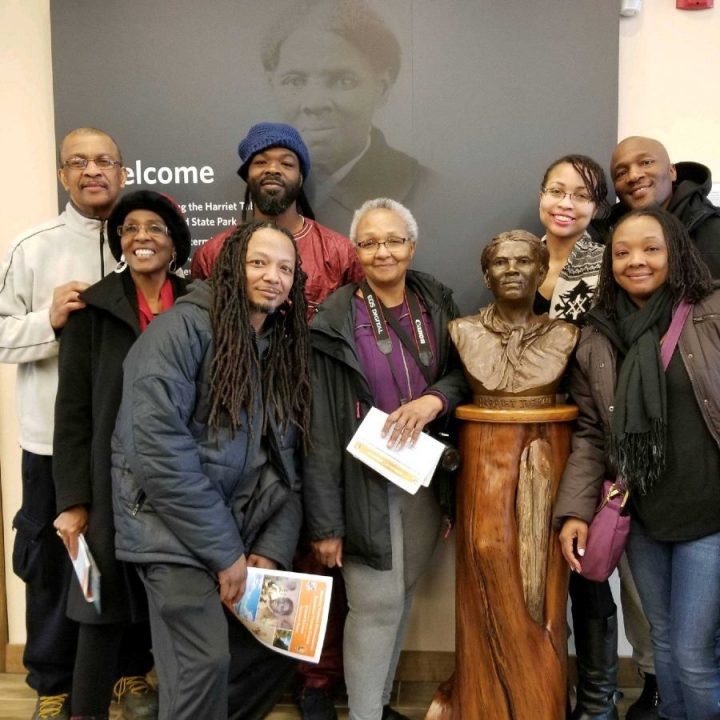
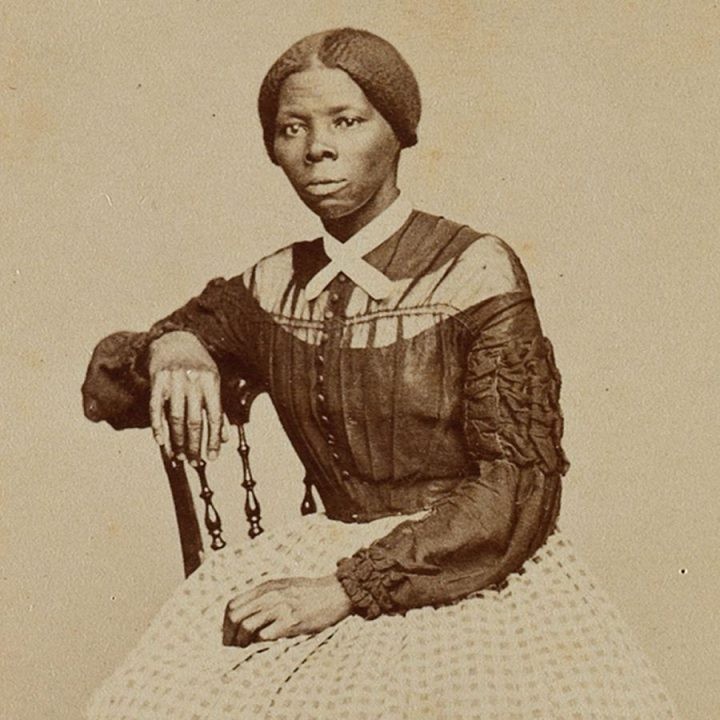
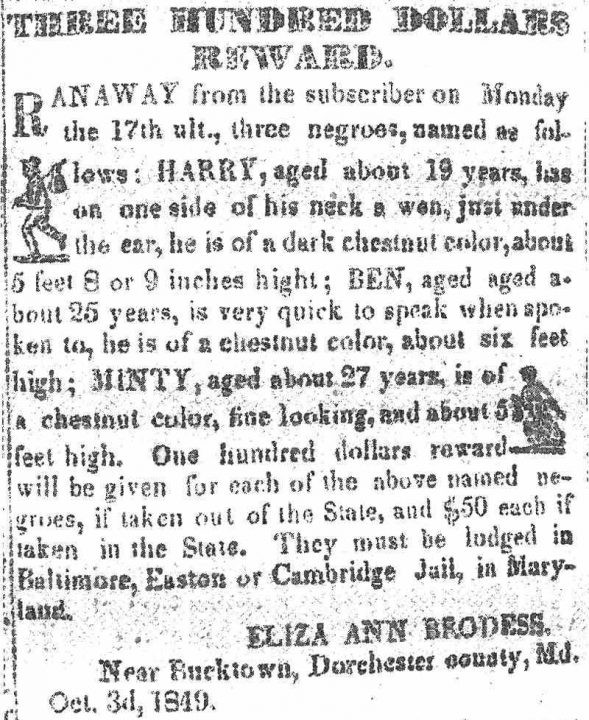
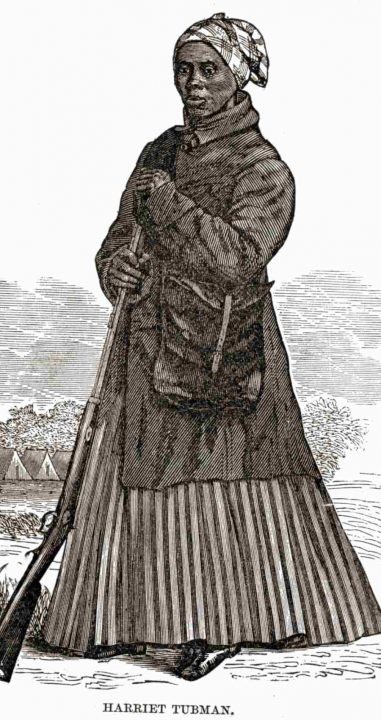
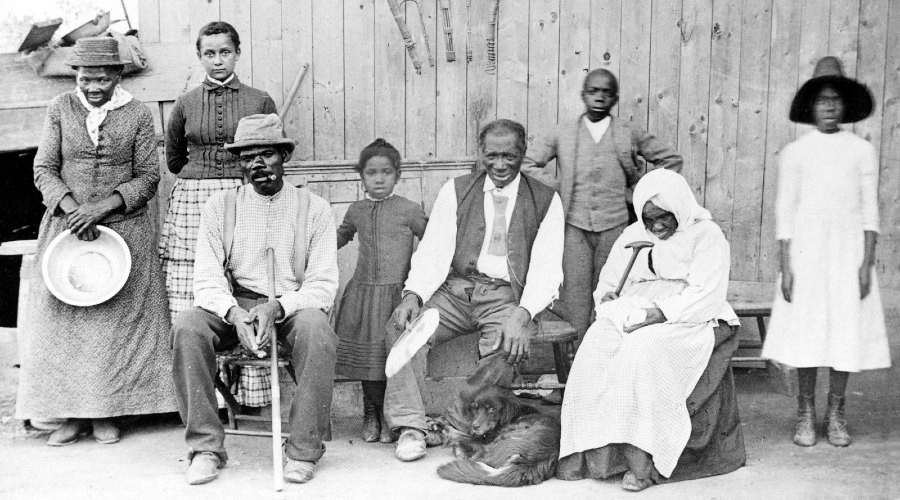
These resources provide valuable insights into her life and the historical context in which she lived.
8.2. Museums and Historical Sites
Visiting museums and historical sites related to Harriet Tubman can provide a powerful and immersive learning experience. Some notable sites include:
- Harriet Tubman Underground Railroad National Historical Park (Maryland): This park tells the story of Tubman’s life and work on the Underground Railroad.
- Harriet Tubman Home for the Aged (Auburn, New York): This site preserves Tubman’s home and the nursing home she established for elderly African Americans.
These sites offer a tangible connection to her life and legacy.
8.3. Online Resources and Educational Websites
Numerous online resources and educational websites provide information about Harriet Tubman and the Underground Railroad. Some useful websites include:
- National Park Service: Offers information about the Harriet Tubman Underground Railroad National Historical Park.
- Biography.com: Provides a detailed biography of Harriet Tubman.
These online resources offer accessible and engaging information for learners of all ages.
9. Interactive Exercises and Activities
9.1. Reflective Writing Prompts
Reflective writing prompts can help you connect with Harriet Tubman’s story on a deeper level. Consider the following prompts:
- What qualities did Harriet Tubman possess that you admire most?
- How can you apply her lessons of courage and selflessness in your own life?
- What social justice issues are you passionate about, and how can you take action to address them?
9.2. Group Discussions and Debates
Group discussions and debates can provide opportunities to explore different perspectives on Harriet Tubman’s legacy and its relevance today. Consider the following discussion questions:
- How does Harriet Tubman’s story challenge our understanding of leadership?
- What are the most pressing social justice issues facing our society today, and how can we address them?
- How can we ensure that Harriet Tubman’s story is remembered and celebrated for generations to come?
9.3. Community Service Projects
Engaging in community service projects can be a meaningful way to honor Harriet Tubman’s legacy. Consider the following projects:
- Volunteering at a local homeless shelter or food bank
- Participating in a community cleanup or environmental restoration project
- Organizing a fundraising event for a social justice organization
These projects allow you to put your values into action and make a positive impact on your community.
10. Frequently Asked Questions (FAQ) About Harriet Tubman
10.1. What Was Harriet Tubman’s Real Name?
Harriet Tubman’s birth name was Araminta “Minty” Ross. She later changed her first name to Harriet, after her mother.
10.2. How Many People Did Harriet Tubman Help Escape Slavery?
Harriet Tubman is credited with helping approximately 70 people escape slavery through the Underground Railroad. She also provided instructions that helped many others escape on their own.
10.3. What Was the Underground Railroad?
The Underground Railroad was a network of secret routes and safe houses used by enslaved African Americans to escape to freedom in the North and Canada. It was not an actual railroad but a metaphorical system of support provided by abolitionists and allies.
10.4. What Role Did Harriet Tubman Play in the Civil War?
During the Civil War, Harriet Tubman served as a scout, spy, and nurse for the Union Army. She led the Combahee River Raid, which freed more than 700 enslaved people.
10.5. What Were Some of Harriet Tubman’s Other Accomplishments?
In addition to her work on the Underground Railroad and her service during the Civil War, Harriet Tubman was an advocate for women’s suffrage and established the Tubman Home for the Aged, a home for elderly and impoverished African Americans.
10.6. When and Where Did Harriet Tubman Die?
Harriet Tubman died on March 10, 1913, in Auburn, New York. She was approximately 91 years old.
10.7. What Is Harriet Tubman’s Legacy?
Harriet Tubman’s legacy is one of courage, resilience, and unwavering commitment to justice. She is remembered as a hero of the anti-slavery movement and an inspiration to those who fight for equality and human rights.
10.8. Why Is Harriet Tubman Called the “Moses of Her People?”
Harriet Tubman earned the nickname “Moses of her people” because, like the biblical Moses, she led her people (enslaved African Americans) out of bondage (slavery) to freedom.
10.9. What Were Some of the Challenges Harriet Tubman Faced?
Harriet Tubman faced numerous challenges, including physical abuse as a child, a debilitating head injury, the constant threat of capture, and the dangers of traveling through hostile territory.
10.10. How Can I Learn More About Harriet Tubman?
You can learn more about Harriet Tubman by reading biographies, visiting museums and historical sites, and exploring online resources and educational websites.
Harriet Tubman’s life story is a testament to the power of courage, resilience, and unwavering commitment to justice. Her lessons continue to inspire us today as we strive to create a more equitable and just world. Discover the path to impactful learning at LEARNS.EDU.VN. Are you ready to delve deeper into the inspiring narratives of history and acquire crucial skills for personal and professional growth? Visit LEARNS.EDU.VN today to explore our extensive resources, including detailed articles and specialized courses, designed to help you unlock your full potential. Take the first step towards a brighter future with LEARNS.EDU.VN! Contact us at 123 Education Way, Learnville, CA 90210, United States. Whatsapp: +1 555-555-1212. Website: learns.edu.vn.
